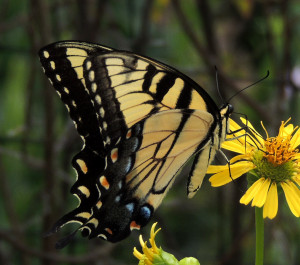Attracting Butterflies to the Garden
go.ncsu.edu/readext?418816
en Español / em Português
El inglés es el idioma de control de esta página. En la medida en que haya algún conflicto entre la traducción al inglés y la traducción, el inglés prevalece.
Al hacer clic en el enlace de traducción se activa un servicio de traducción gratuito para convertir la página al español. Al igual que con cualquier traducción por Internet, la conversión no es sensible al contexto y puede que no traduzca el texto en su significado original. NC State Extension no garantiza la exactitud del texto traducido. Por favor, tenga en cuenta que algunas aplicaciones y/o servicios pueden no funcionar como se espera cuando se traducen.
Português
Inglês é o idioma de controle desta página. Na medida que haja algum conflito entre o texto original em Inglês e a tradução, o Inglês prevalece.
Ao clicar no link de tradução, um serviço gratuito de tradução será ativado para converter a página para o Português. Como em qualquer tradução pela internet, a conversão não é sensivel ao contexto e pode não ocorrer a tradução para o significado orginal. O serviço de Extensão da Carolina do Norte (NC State Extension) não garante a exatidão do texto traduzido. Por favor, observe que algumas funções ou serviços podem não funcionar como esperado após a tradução.
English
English is the controlling language of this page. To the extent there is any conflict between the English text and the translation, English controls.
Clicking on the translation link activates a free translation service to convert the page to Spanish. As with any Internet translation, the conversion is not context-sensitive and may not translate the text to its original meaning. NC State Extension does not guarantee the accuracy of the translated text. Please note that some applications and/or services may not function as expected when translated.
Collapse ▲When most people select plants for their garden, they choose plants that have beautiful flowers and colors. For some plants, those beautiful flowers attract butterflies that are often an added bonus for most gardeners. Some gardeners enjoy the butterflies enough so that they form butterfly gardens that consist of plants known for attracting butterflies.
To attract butterflies into a garden you want to consider what the butterflies are looking for when they enter a garden. Butterflies enter a garden to look for food. For butterflies their food is nectar. So, in a butterfly garden you would want to have plants that provide nectar to the butterflies. There are certain plants with flowers that produce sweet nectar butterflies would use as food. There are some general factors to keep in mind when selecting flowers for a butterfly garden. Many butterflies prefer plants with pink, red, purple, yellow, or orange flowers. Butterflies tend to be more attracted to large flower masses of a single color or closely related colors, instead of many colors mixed together. In order to get to the nectar butterflies must have somewhere to land. Butterflies prefer plants with clusters of short tubular flowers or flowers with large, flat petals. Having a mix of plants will allow for flowering over for a longer time and will attract more butterflies from early spring through frost.
When considering a location for a butterfly garden, remember butterflies love the sun. A bright sunny area with at least six hours of sun and protected from high winds is an ideal location for attracting butterflies. One area does not have to be designated for a butterfly garden, you can choose to mix plants that attract butterflies within the rest of the landscape.
Butterflies have to warm their bodies in the mornings before becoming active. They use their wings to absorb the sun’s warmth which is then transferred to their body. To do this they need a place to sit and catch some rays in the mornings. Having a few flat stones or other objects with a reflective surface will provide a place for butterflies to sit and absorb the warmth of the morning sun.
Often times we see groups of butterflies gather on wet sand or mud. This is an activity called “puddling” and the butterflies are going to the wet sand or mud to obtain minerals from the soil. Adding some small “puddling” areas in a butterfly garden will also help attract butterflies. A shallow pan can be placed in the soil and filled with sand. The sand needs to be kept moist, which can be easily done by placing the pan under a soaker hose or near a water source. You can mix in salt (table salt or rock salt) to the sand at a rate of ½ to ¾ cup salt to 1 gallon of sand to provide some minerals for the butterflies.
As for what plants you could put in a butterfly garden, include a mix of annuals and perennial flowering plants. Annual plants known for attracting butterflies include: cosmos, impatiens, marigolds, sunflower, verbena, and zinnia. Perennial plants that attract butterflies can include black-eyed Susan, aster, coneflower, coreopsis, lantana, and phlox just to name a few. There are trees and shrubs that can attract butterflies, like abelia, buddleia, rose of Sharon, and viburnum.
Jessica Strickland is an agriculture extension agent, specializing in horticulture for North Carolina Cooperative Extension in Wayne County.
Learn More!
- Sign up for Wayne County Extension Gardening email list to receive timely gardening tips.
- Learn more by following us on Facebook and Instagram
- Gardening questions? Ask a Master Gardener Volunteer. The Wayne County Extension Gardener Volunteer Plant Clinic is open on Mondays and Wednesdays from 10 a.m. to 1 p.m. (April through August) to help you with your gardening questions. Contact by phone at 919-731-1433,email at master.gardener@waynegov.com or stopping by the Wayne County Extension Office at The Maxwell Regional Agricultural & Convention Center (3114B Wayne Memorial Drive, Goldsboro).





